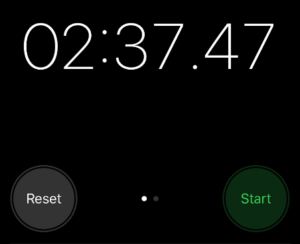How would you feel about 150% faster time to revenue?

If you read Part 1 of this story, you know that my personal experience and observations in the first few weeks of having Riverbed SaaS Accelerator running to boost the performance of my Office 365 (O365) has been noticeably better.
But just how much would you believe me if I didn’t CLOCK IT?
So that’s what I set out to do. Mind you—I’m really not a naturally technical person, but I’ve been around the networking space for a little more than 20 years, so I suppose I have learned a thing or two…
These days when I speak with sellers, partners and enterprise customers, we often find ourselves considering the many ways users access the apps they use to do their jobs. It’s become what I call ‘the Planes, Trains and Automobiles’ talk. I mean—in reality, in these digital times we try our best to be available wherever we happen to be. And more often than not, that can also mean a lot of logging in from home and local coffee shops! So that’s what I decided to test first: my home and my local Equator Coffee in Larkspur, California.
THE GOAL: To prove that the experience I shared on stage and in the previous blog wasn’t just a fluke—and so that I could share proof with YOU!
Coffee shop

In this initial test, I decided to VPN in from my local coffee shop to simulate a real world backhaul scenario. First, I would clock and upload a large file to OneDrive, enabled WITH Riverbed SaaS Accelerator. Then I would clock the same file upload to Dropbox, NOT enabled with SaaS Accelerator. I used the stopwatch on my phone for this test and hit START at the same time as I hit the UPLOAD button. In a future blog I’ll show you what happens when I do this without the VPN too. All of the tests here are cold uploads. In another blog I’ll get into the distinctions between first-effort cold and subsequent warm uploads. Here’s what happened:

OneDrive (with SaaS Accelerator enabled for O365 and Client Accelerator enabled on my laptop)
- 129MB ppt upload
- Avg latency 91.614ms
- 1 min 55 sec upload
- VPN active

DropBox (no SaaS Accelerator)
- 129MB ppt upload
- Avg latency 31.675ms
- 5:04+++
It’s important to note what I mean by adding the ‘+++’ after the 5:04. That just means that the file was not finished uploading and I got frustrated and shut it down before the upload completed. I mean—has this happened to you? You’re working outside the office and doing some sort of file share to an enterprise SaaS platform, and the upload or download takes so long that you get distracted and walk away, putting off what you were focused on for another time? I wonder how much work time we all waste on this sort of frustration?
Anyway, the conclusion here was that the OneDrive through the VPN with SaaS Accelerator was more than 225% faster—and since the upload done without SaaS Accelerator was never completed, who knows when that would have completed.
Incidentally, I looked at the latency from the coffee shop, and as you can see from the averages noted above, the latency in this case was manageable. Imagine if my latencies were even higher—as they can often be for employees who are often on the road and mobile.
Now let’s take a look at my home office.
Home office
And so I went home and ventured to test from there. After all, many of us work from home regularly—whether it’s logging in at night to get an urgent something out to a customer, to meet a deadline, or working some days of the week from a home office, working from home is hardly unusual behavior in 2020. In fact, this morning I was reviewing a survey of 104 executives at large enterprises done by one of our teams. This was focused on the use of enterprise SaaS applications, and 78% of those surveyed noted ‘home’ as a place where they regularly access O365.
For this test, I decided to use a slightly larger file, and also go direct to the Internet. It was a relatively arbitrary choice, but in this case, I looked at this without the VPN. Here’s what resulted:

OneDrive (SaaS Accelerator enabled)
- 173MB ppt upload
- Avg latency 73ms
- 39-second upload

DropBox (no SaaS Accelerator)
- 173MB ppt upload
- Avg latency 21ms
- 2:37.47 minutes
- What I noticed: a lot of hanging, wondering when the file was going to finish uploading; risk of losing patience as I did in the coffee shop
With Riverbed SaaS Accelerator, the upload was 75% faster
Now by no means is this meant as a negative on either SaaS application. Whether it’s O365 or Dropbox or Box or Salesforce or otherwise, these modern tools have given us new roads into collaboration and sharing on a global scale that we really were unable to achieve by way of old-school data center-based application approaches.
However, the question now becomes this: are we getting the most out of these applications into which we are investing hundreds of thousands and millions of budget dollars on behalf of our companies.
What happens when we apply the concept of files-sharing to and from a SaaS cloud such as O365 to 100, 200, 1000 or more revenue-generating employees uploading and downloading files every business day in order to get a new product to market, to execute a time sensitive mission, to collaborate on a big R&D project or automotive design, to process orders, connect with a customer, or any other business-critical transaction?
And if we take just the average acceleration of the 2 examples I have noted here, 225% faster and 75% faster respectively, how would your business be impacted if every SharePoint and OneDrive action performed 150% faster?
